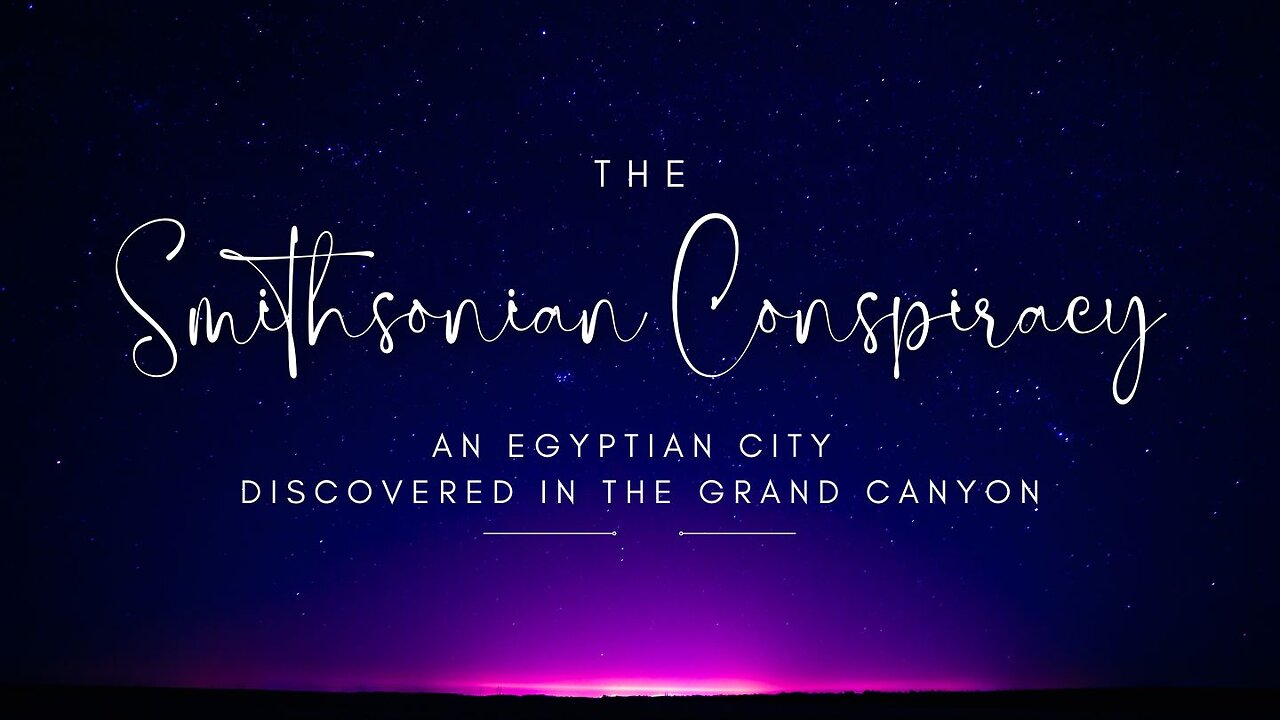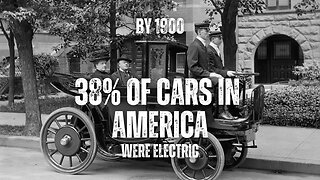Premium Only Content

The Smithsonian Conspiracy When An Egyptian City Was Discovered In The Grand Canyon
In 1908, President Teddy Roosevelt wanted to declare the Grand Canyon off-limits to all timber and mining operations. It would take another 11 years for Congress to designate the Grand Canyon a national park.
Sensing a final opportunity for adventure, explorer G.E. Kincaid took a boat down the Colorado River and through the Grand Canyon. The canyon was rich in minerals like gold, silver and copper and Kincaid wanted to see what he could find before the area was closed off for good.
About 40 miles up-river from the El Tovar Crystal canyon, Kincaid saw stains in the sediment formation about 2,000 feet up. He tied off the boat and got out to investigate.
Kincaid couldn't find a trail, but after a short hike he found something interesting covered in desert brush. Steps. Hundreds of them. Carved in sandstone. Steps that wound their way up to a high shelf on the side of the canyon.
He followed the steps until he came across a cavern entrance. An entrance that was clearly man made. Kincaid entered the cavern and turned on his flashlight. On the walls he saw writing. But it wasn't English or Native American writing. It was Ancient Egyptian Hieroglyphics. Kincaid lifted his flashlight and saw that the tunnel ran far into the distance. He didn't realize it at the time, but this was only the beginning.
THAT FATEFUL DAY
G.E Kincaid was well-known for being an explorer and hunter. On the day that he would make his stunning discovery, however, he was simply on a routine expedition, floating the Colorado River and looking for minerals. Kincaid was all by himself when he noticed “stains” way up on the wall of the canyon above him. For whatever reason, he decided to do some unplanned exploring. Whatever he saw must have particularly motivated him. Because Kincaid hiked until he was 2,000 feet above the river – only 1,500 feet below the rim at that point. Eventually, he came to the mouth of a cave.
According to his own personal journal, where he described his discoveries, he came upon a crypt full of mummies. Each with their own personal shelf. He reportedly took notes and photographs and collected several artifacts before leaving. Along with the news of his discovery, he shipped these artifacts to the Smithsonian Institution in Washington D.C., where he had a number of contacts.
This is according to the Phoenix Gazette article, anyway. By the time their front-page article was published, the team of scientists had explored Kincaid’s cave much more thoroughly. More passageways extended from the main one that Kincaid had originally entered. These lead to multiple rooms as wide as thirty or forty feet. A stone idol was reportedly found. The statue resembled Buddha.
Traveling nearly a mile into the rock, the researchers came across a huge room with many passageways leading away from it. Similar to the spokes of a wagon wheel. They described storerooms full of seeds. As well as a dining room more than 700 feet long and a room that stank of a “deadly, snaky smell. Archaeologists supposedly uncovered copper instruments and war weapons, cups made of gold, pottery work, and hieroglyphic writing. These artifacts suggested an origin not in this country, but in the Orient.
Today, the Smithsonian Claims to Have No Knowledge of This Discovery
The long story on the front page of the Phoenix Gazette clearly indicated that the Smithsonian Institute had sent between thirty and forty archaeologists to help Kincaid excavate he discover. Today though, there are no artifacts or information to be found about the underground settlement. One Smithsonian rep explained that “… no Egyptian artifacts of any kind have ever been found in North or South America. Therefore, I can tell you that the Smithsonian Institute has never been involved in any such excavations.”
-
 11:19
11:19
The Aquarius Bus
1 month agoBy 1900, 38% of cars in America were electric! Wanna know how they were powered & charged?
1.16K4 -
 8:08
8:08
Guns & Gadgets 2nd Amendment News
1 day ago16 States Join Forces To Sue Firearm Manufacturers Out of Business - 1st Target = GLOCK
12.4K25 -
 10:17
10:17
Dermatologist Dr. Dustin Portela
1 day ago $1.59 earnedOlay Cleansing Melts: Dermatologist's Honest Review
20.5K -
 1:02:20
1:02:20
Trumpet Daily
1 day ago $8.54 earnedObama’s Fake World Comes Crashing Down - Trumpet Daily | Dec. 20, 2024
11K17 -
 6:29
6:29
BIG NEM
18 hours agoCultivating God Mode: Ancient Taoist NoFap Practices
9.45K2 -
 30:53
30:53
Uncommon Sense In Current Times
1 day ago $0.52 earned"Pardon or Peril? How Biden’s Clemency Actions Could Backfire"
12.2K -
 40:01
40:01
CarlCrusher
16 hours agoSkinwalker Encounters in the Haunted Canyons of Magic Mesa - ep 4
11.3K2 -
 59:44
59:44
PMG
1 day ago $1.28 earned"BETRAYAL - Johnson's New Spending Bill EXPANDS COVID Plandemic Powers"
30.7K2 -
 6:48:50
6:48:50
Akademiks
14 hours agoKendrick Lamar and SZA disses Drake and BIG AK? HOLD UP! Diddy, Durk, JayZ update. Travis Hunter RUN
156K27 -
 11:45:14
11:45:14
Right Side Broadcasting Network
9 days agoLIVE REPLAY: TPUSA's America Fest Conference: Day Three - 12/21/24
340K28